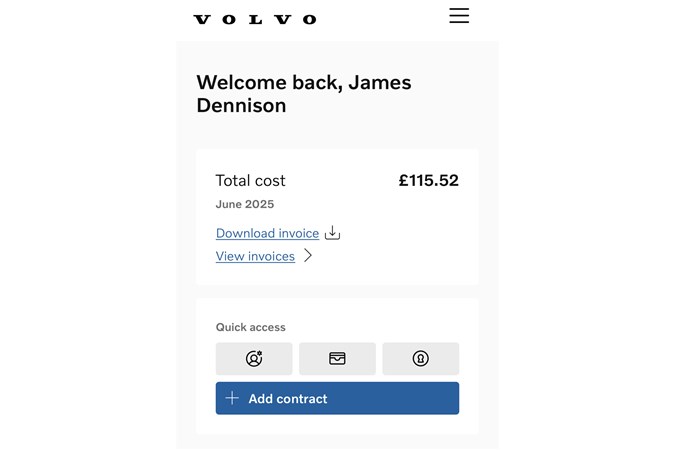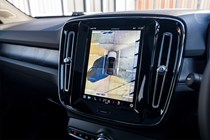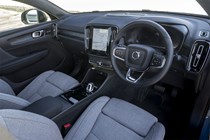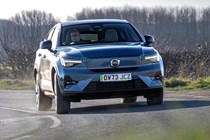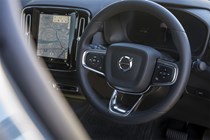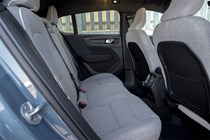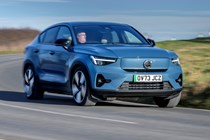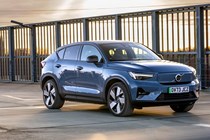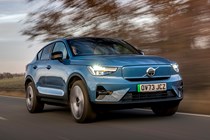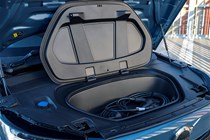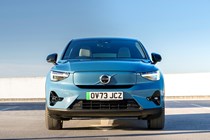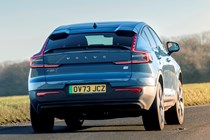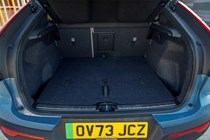
Volvo EC40 long-term test
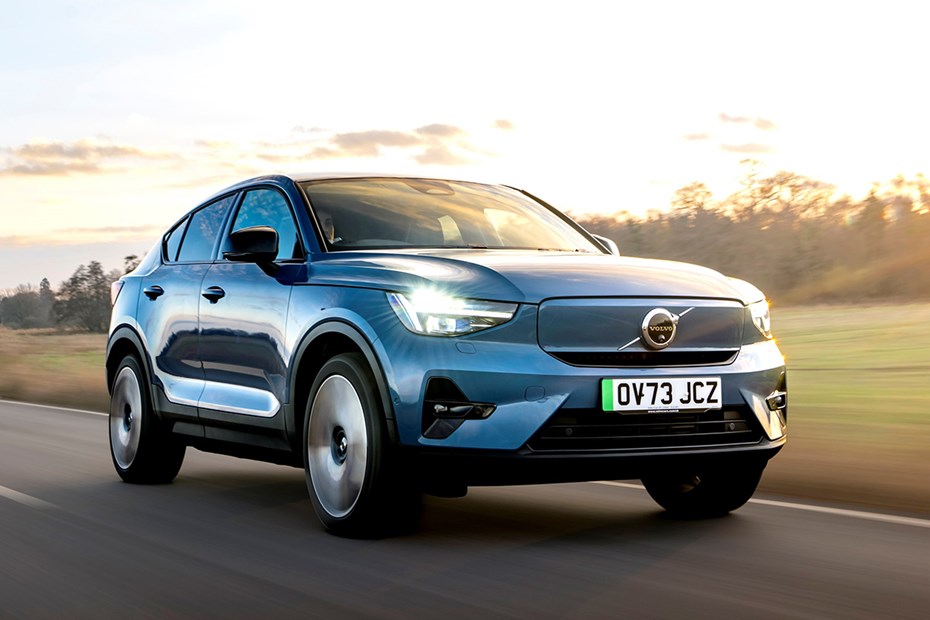
Looking for a medium-sized electric SUV with an exceptional safety record and excellent build quality? The Volvo EC40 promises just that, so we’re running one for six months to find out whether it lives up to its billing. Oh, and its keeper – James – hasn’t got a home charger. Find out how he gets on below…
Reports by James Dennison
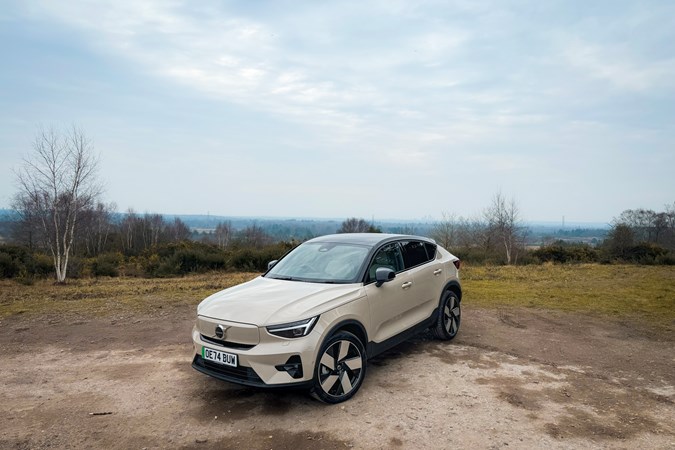
Update 1: Welcome
Find out what spec we’ve got on our Volvo EC40 long-termer
I’ve been lucky enough to run a number of different cars for Parkers.co.uk over the years, but this is the first time I’ve been entrusted with a Volvo. Handy, given I’ve now hit 30 and the appeal of low-slung supercars pales into insignificance compared with Volvo’s brilliant safety record and the peace of mind that goes with it. Indeed, when the C40 Recharge (the former alias of the EC40) was tested by Euro NCAP in 2022, it achieved an exceptional five-star rating.
But while Volvo is extremely proud of its safety record, it doesn’t want customers to buy its cars based on crash protection alone. There are other considerations – style, tech, practicality, how it drives – that the EC40’s rivals major in, so how does Volvo’s take on the mid-sized SUV fare in the real world?
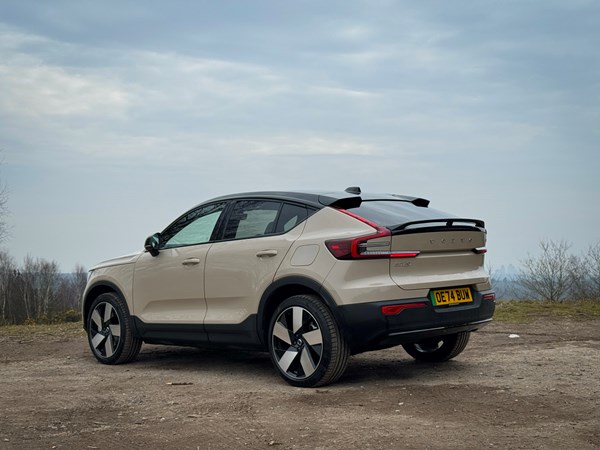
Oh yes, and there’s one more complication that I’m going to throw into the mix. I currently don’t have a home charger and thus I will be relying – at least initially – on the ability to power up at work (110 miles from home) and the public network. Admittedly, this would be the same in an Audi Q4 e-tron Sportback, Ford Mustang Mach-E, BMW iX3 or any of the EC40s rivals, but it’s an interesting test of EV feasibility all the same.
All of that is to come, but first, a quick look at the spec on this EC40. It’s a single motor extended range RWD Ultra model. To break that down, it’s got the mid-level powertrain (there’s also regular RWD and twin motor all-wheel drive) and comes with the Ultra level of equipment – more on that in a bit.
As such, the key stats are one electric motor powering the rear wheels with 252hp and 420Nm of torque. That’s enough for 0-62mph in 7.3 seconds and a limited top speed of 112mph. Meanwhile, the usable battery capacity is 75kWh and thus claimed WLTP range is up to 341 miles. It’ll charge up to 11kW on AC (meaning 0-100% in around 8 hours) and 155kW on DC (10-80% in around 33 minutes).
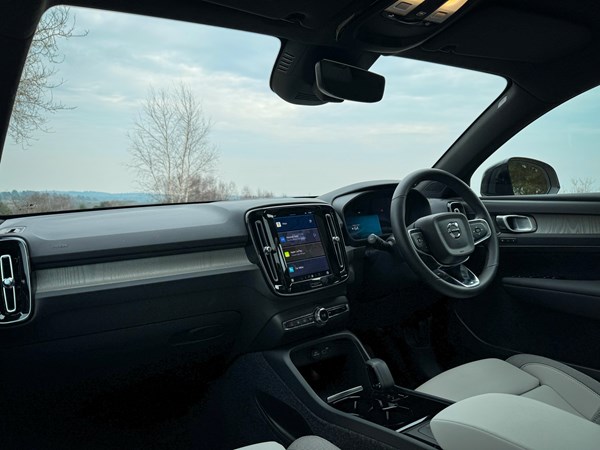
The key take aways from the performance figures are that a) it’s not too quick with well-judged on-paper acceleration – for me, many EVs deliver excessive performance – and b) the claimed range looks very promising. If I can get near 300 miles, that’ll be mighty useful given my current charging challenge.
As for the Ultra part of the spec, it includes plenty of desirable equipment such as a 360-degree camera, park assist for front, rear and sides, pixel LED headlights, 20-inch five-spoke alloys, power passenger seat, Harmon Kardon Premium Sound audio system and Fusion Microtech/textile upholstery.
The Ultra spec adds just over £5,000 to the list price and together with the Sand Dune paint (£0, usefully!) and £125 textile mat for the boot, the total price is £58,480. Looking at the spec sheet and brochure, my only initial concerns are a) no wireless CarPlay and b) AC charging is limited to 11kW, not the 22kW our office chargers can deliver. Although, looking around, many high-end EVs are limited to 11kW so that’s not something unique to the EC40.
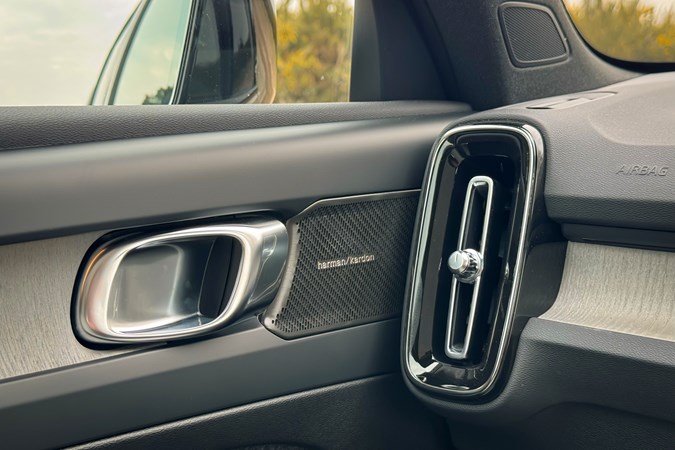
Keep an eye on this page over the next few months to find out how I get along with the EC40 and whether I can survive EV ownership without a home charger!
Update 2: Charging
2 months in with the Volvo and James is enjoying the EV life (mostly)
Long story short – The car is mostly good. But charging it? Not so much.
So what have I learnt after a month with the Volvo EC40? Well there’s some bits about everyday EV motoring that I like, some I’m less so keen on. And in the interests of ending this piece on a high, I’ll start with the bad parts.
Owing to the chilly winter weather in the UK (that extended into March, obvs), the EC40 has frequently been driven in sub-zero temperatures. Fine, you’d think, it’s a Volvo. But it’s also an EV with a battery that hates extremes of climate. As such, my WLTP range figure of up to 341 miles looks like a pipe dream.

I wasn’t expecting this figure, or even over 250 miles, but to see 210 on the dash after a full charge is a little disappointing. And, having tested this in the real world, it’s more like sub-200 on early morning runs to the office.
Happily, I can easily make it the 110 miles from Surrey to Bauer Media in Cambridgeshire, charge up then make it back without any problems. However, after making it home I have two charging choices. The first is an 11kW Chargepoint charger (51p/kWh + £1 per hour parking fee) and the second is an Allego 150kW fast charger (95p/kWh + £1 per hour parking fee). These are a 5-minute and 10-minute drive from home respectively, with the former walkable in 15 mins.
Therefore, in order to get an 80% charge (and assuming I start with 20%) I need to leave the car at the slow charger for 4 hours (and spend £27 on parking and electricity) or head to the fast charger and spend £44. Given this currently gets me around 130 miles of range (and, annoyingly, doesn’t charge at the advertised speed), it’s an expensive way to do things. When and if I get a home charger, I can report back further on the cost efficiency of charging up the EC40.
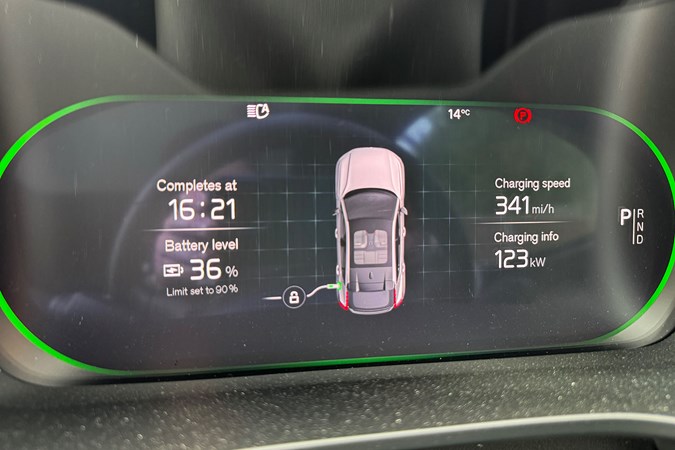
Happily however, I am finding the car itself a lovely thing to spend time in. The lack of wireless CarPlay has proved an annoyance for short journeys as suspected, but otherwise it’s easy to get along with day-to-day. Of particular note, is the Volvo app, which allows me to preheat the car, check the charging, cleanse the air and lock and unlock the vehicle. It also works on my watch and is super responsive – more so than the BMW app I used recently.
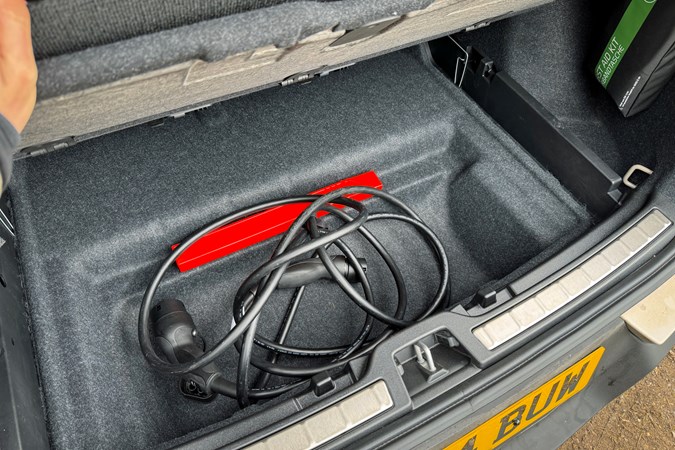
I’m also enjoying the ease of turning off the speed limit warning chime and the lane keeping assist (sorry, they’re just too interfering), plus the usability and space in the cabin is brilliant for everyday life. I’m yet to feel like I’ve scratched the surface of the cabin storage despite having had the car for well over a month. The door pockets are also lined which means anything you put in there doesn’t rattle around and require wedging in place.
This practicality also extends to the storage areas for the charging cables. With previous long-term cars that required a cable, I had to keep it in the main boot compartment. Not so with the EC40 – there’s a proper space under the boot floor and, on top of that, a frunk. Really well thought out.
Update 3: Infotainment
What is infotainment, why is it important and what’s it like on the EC40?
Long story short – Volvo’s infotainment is dated but still gets a respectable B-.
Infotainment is a word you probably see a lot in car reviews. First heard in the early 1980s, it’s a portmanteau of ‘information’ and ‘entertainment’ and as such it’s the sort of thing my mother would say ‘isn’t a real word’. However, it does refer to something that can essentially make or break a car, hence why I’m going to spend report number three talking about the Volvo’s infotainment.
A car’s infotainment system is usually the main central screen and any other large, interactive digital displays. Think digital dash, or maybe even a passenger display like you get on some Mercedes-Benz models for example. In the EC40, it’s confined to a 9.0-inch central touchscreen and a 12.3-inch digital dash. In my three months with the EC40 thus far, I reckon the infotainment to be a bit of a mixed bag – but we’ll start with the good bits.
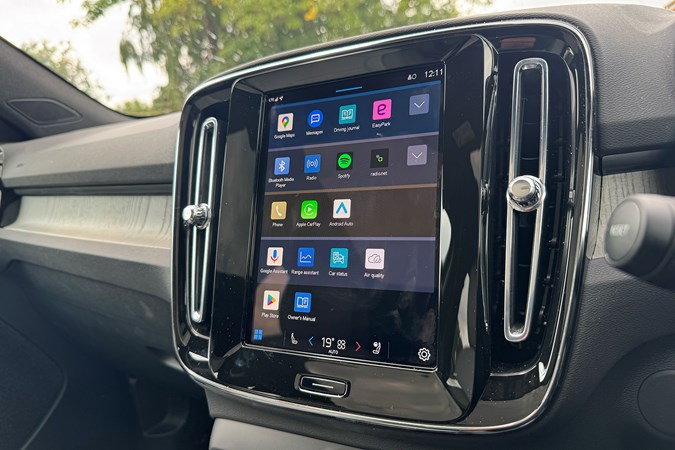
For example, this is the first time I’ve had a long-term test car where over-the-air (OTA) updates have made a real difference to everyday driving. One morning, I jumped in the EC40 and noticed that the Waze mapping (something I use via Apple CarPlay but is also available as a standalone nav app in the car’s software) was appearing on the digital dash as well as the central screen. Brilliant. And I didn’t even realise an update had occurred.
Having the Waze maps appear on the dash adds to the ease-of-use the car delivers – another one of the infotainment’s strong points. Granted, I wish there were physical climate control dials, but the always-on touch buttons in the corner of the screen are the next best thing and integrate nicely with the heated seat controls.
What’s more, if you wish to turn off the speed limit chime it’s one button on the steering wheel. Although, sadly, to disable the lane-departure assist it’s a little more complex. Overall, however, the key functions are straightforward enough to access.
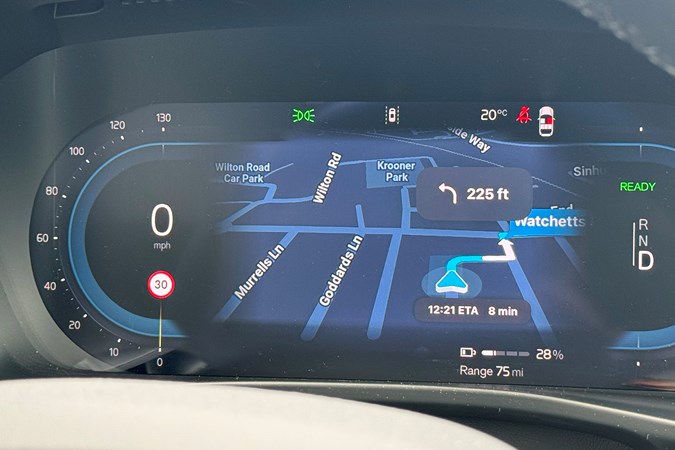
Now onto the bits I’m not so keen on. No wireless Apple CarPlay feels at odds with the car’s easy-to-use character. Jump in, put the transmission selector in D and drive off – you don’t even need to switch it on because there’s no on/off button. However, plugging the phone in feels very 2015. And yes, I am aware of how utterly spoilt I sound, but the fact is that most rivals offer wireless CarPlay as standard.
I’ve also noticed that the infotainment is starting to feel its age. We first saw a variant of the portrait orientation Volvo infotainment back in 2015 and, in truth, it doesn’t feel like it’s moved on that much. The plus side of this is that it’s relatively easy to use owing to a relative lack of features, but for those who value their tech offerings it’s a way behind BMW and Mercedes-Benz for example.
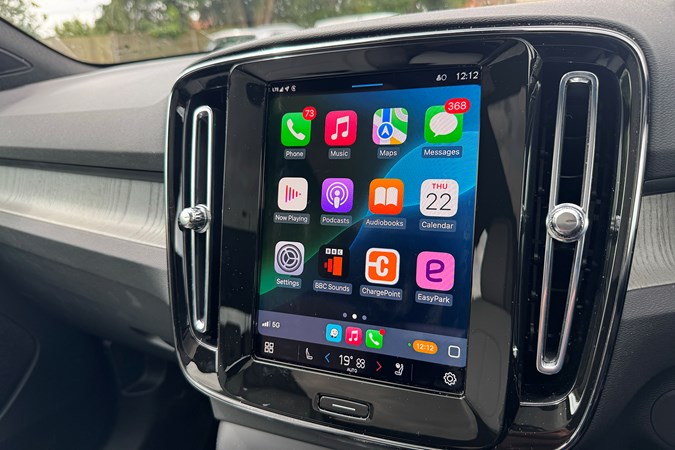
Finally, the 12.3-inch dash is rather bereft of customisation. There really is very little you can change and information you can add in – unlike many of this car’s rivals. No option to see the music playlist, phone recent calls etc. There’s a window into the sat-nav (as mentioned above), but that’s it. However, I can’t help but enjoy the level of zen you get because of this. The digital dash is simple, clear and well-laid out – which feels like it suits this car well.
Update 4: Practicality
Is the EC40 a proper Volvo and thus the default choice for best-in-class space and practicality?
Long-story short: There’s more practical cars out there – but the EC40 is a long way off feeling cramped.
Well it took me until report four with the EC40, but the time has come to discuss perhaps the most obvious topic going when it comes to Volvo family cars – practicality. You see, before the Swedish brand became all boujee and stylish, it made its name with big, boxy estate cars. If you’re too young to know what I’m referring to, check out the Volvo 245 for the ultimate in slab-sided Swede style.
Fast forward to 2025 and things have changed somewhat. The EC40 I’m running is still more angular than most, but the design language has picked up a few curves. Admittedly, there’s been mixed responses to the looks of the EC40 (some think it looks like a panda from the front – which, surely, isn’t a bad thing) but the bigger question for me is does it deliver style and practicality?
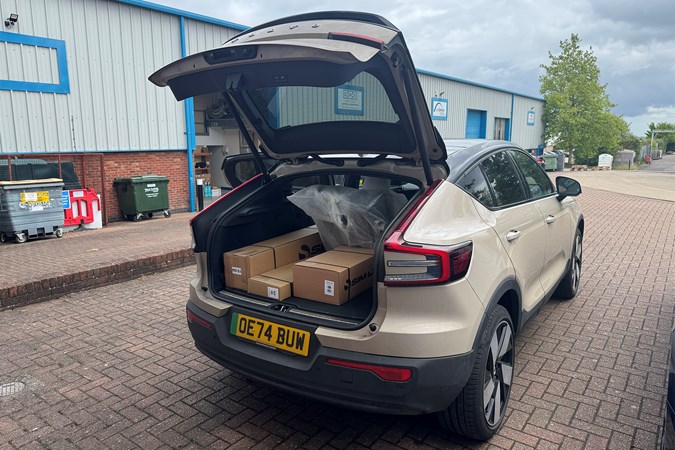
To find out, I did the traditional ‘see how much you can pack in your long-termer’s boot’ exercise with some unusual cargo. When I’m not testing cars and presenting videos for Parkers and CAR magazine, I like to race them. And if I can’t race them in real life, I’ll jump on my home sim rig and race them in the virtual world.
As a present to myself, I decided it was time to upgrade my setup and so made the trip to Pure Sims in Haverhill, Cambridgeshire to pick up my new equipment. Sufficed to say, the boxes were large and varied in size and shape. A perfect test for the EC40 which, to be honest, it passed easily.
What’s more, Volvo had kindly included the optional £125 textile load compartment matt that’s rubbered on one side and carpet on the other. For most of my time with the car, it’s lined the boot while folded in half, yet for loading heavy carboard boxes over the gap created by the folding seats it was perfect.
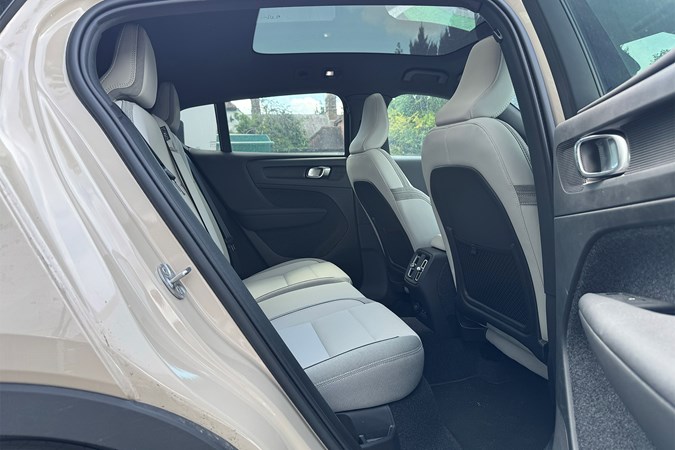
However, it’s far from offering best-in class-space. Official boot capacity for the EC40 is 480 litres rear seats up and 1,196 litres rear seats down. That’s behind both the Skoda Enyaq Coupe and Audi Q4 e-tron Sportback that each deliver well over 500 litres in the former configuration.
That said, I’ve never felt the EC40 to be lacking in luggage space (as proved by the sim rig equipment), plus I’m a big fan of the additional room for storing charging cables under the boot floor and the frunk under the bonnet. What’s more, the standard electric boot lid is useful and opens with reasonable urgency, plus has a second button to automatically lock the car after the boot shuts.
There’s other nice touches, too. Such as the bin in the centre console (perfect for sweet wrappers) and the lined door pockets that stop items rattling around while on the move. Small things, but they make a big difference to everyday life with the car.

Rear seat space? It’s good, but – unsurprisingly – that neat-looking sloping roof not only heavily compromises rear visibility (I’ve had better views out of two-seat supercars) but it also cuts into rear-seat headroom. Aside from that, there’s good size door pockets, nets behind the front seats and individual heated seats – which rear-seat passengers love. However, once again, there’s no doubt that the Enyaq Coupe and Q4 e-tron Sportback edge it on raw space in the back.
In summary, the EC40 shouldn’t be your default choice if your main priority is space. Rivals do it better. However, during my time with the car I honestly can’t say I’ve ever felt it was lacking in practicality and its boot, passenger space and general roominess is far from a let-down.
Update 5: Charging
James signs up to VPCS – Volvo Public Charging Service – to see if it improves his EV experience
Long-story short: It’s not perfect, but services like VPCS are the future of EV motoring
Here’s something that I probably should have tried out earlier with the EC40 but never quite got around to it. For the past few weeks I’ve been using the Volvo public charging service (VPCS) via the Volvo Cars app. This allows me to sign up to a single entity that can then be used as a sort of charging go-between.
The upshot being I can charge the EC40 with a number of different chargers, but rather than have to sign up to each individual charger provider, I can do it all through VPCS. No more 20 different charging apps on my phone or receipts spread everywhere.
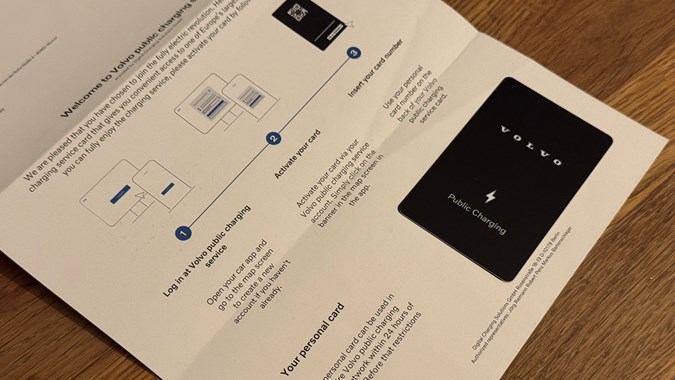
Instead, it should simply be a case of activating the charge via the Volvo Cars app or physical charge card and being invoiced at the end of the month by VPCS for the total cost of all of my charges. What’s more, I can leave said card in the car and, should I lend it to anyone, they’ll have a straightforward way to charge without hassle. Sounds good in theory, but did it work out?
Well, the sign-up process was easy enough. Fill in your details and wait for the card to appear in the post. Even without that however, I was able to charge at my usual spots via the Volvo Cars app, thus removing the need to pull individual invoices from said apps. I had read on forums that some users had found VPCS to be more expensive, yet that didn’t tally up on the chargers I used. The prices were the same, but the convenience was higher. Excellent.
What’s more, the card – once it arrived – also appeared to work without fault. Or at least, it did for me. I leant the car to my partner for the true test of usability (she’s only ever owned petrol cars) and, sure enough, she visited a new charger and the card failed to activate the charger. User error or an issue with the charging system?
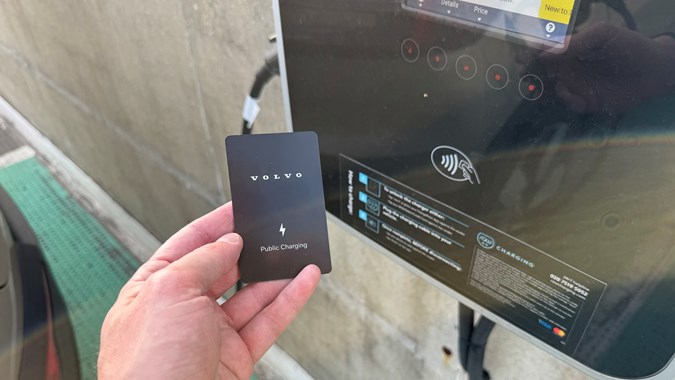
Either way, the idea – I believe – is sound. One of the worst bits of running an EV has been not knowing what to expect when you visit a public charger. More often than not, they work, but paying for the charge and collecting a receipt after? That’s another challenge entirely.
Having the public charging service greatly improves this and saves not just time, but also a good deal of stress. Yes, there’s clearly a few kinks to iron out, but it feels like this is the answer to one of the main issues with the famously hit-and-miss public charging network.
